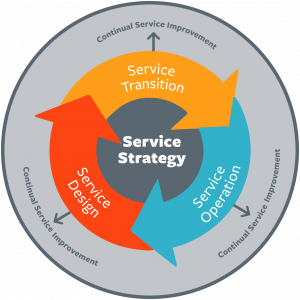What is ITIL demand management?
ITIL demand management helps a business understand and predict customer demand for services. Every business is subject to cyclical behavior. According to ITIL, the purpose of demand management is to understand, anticipate, and influence customer demand for services.

This means that demand for services can grow or shrink with the business cycle. In deciding whether to provide a service, IT Service Management must understand the patterns of business activity (PBAs) related to the service. While it is important to avoid having inadequate capacity, excess capacity is also a business risk, involving expense which typically cannot be recovered, since customers cannot be expected to pay for capacity they are not using.
PBAs are typically thought of in terms of transaction volumes. ITIL suggests other factors be considered as well, such as the source of the demand, special needs such as enhanced security, and tolerance for delay. The job of demand management is to identify appropriate PBAs and to associate them with user profiles (UPs). This becomes important input to the capacity management process in the Service Design lifecycle phase.
Download Now: ITIL 4 Best Practice e-Books
These all-new for 2020 ITIL e-books highlight important elements of ITIL 4 best practices. Quickly understand key changes and actionable concepts, written by ITIL 4 contributors.
As a process, it is part of the ITIL service strategy stage of the ITIL lifecycle. Service strategy determines which services to offer to prospective customers or markets. The decisions that are made in the service strategy stage affect the service catalog, the business processes, the service desk, the required capacity, and the financial requirements of the service provider.
As part of the service strategy stage, demand management rationalizes and optimizes the use of IT resources. It ensures that the amount of technical and human resources that has been budgeted matches the expected demand for the service. If the prediction is too low, the agreed-upon service levels may not be delivered. If the predictions are too high, resources will have been allocated to a service that will not be used (or paid for). Demand management bridges the gap between service design, capacity management, and business relationship management to ensure that the predictions are accurate.
Demand management is a process within ITIL that is more supportive of other processes than a self-contained process. Unlike incident management, for example, the activities inside demand management are not visible to the customer. When service demand is not properly balanced, it affects nearly every part of the ITIL lifecycle.
Demand management roles
Like every process within the ITIL framework, demand management has a chain of responsibility and ownership. Here, the owners are called business relationship managers. Business relationship management creates and grows the connection between the customer and the service provider.
Demand management objectives and activities
The purpose of demand management is to detect and influence the demand that customers have on IT services. This process involves three main actions:
- Analyzing current customer usage of IT services: The easiest way to do this is to analyze service desk data regarding incidents, requests, and problems. Network usage and uptime can be measured via a service dashboard, such as the kind used in a network operations center (NOC) environment.
- Anticipating future customer demands for IT services: Here, the business relationship manager comes into play. He or she may speak with the customer directly about forecasted needs, will analyze trends in usage or tickets, and will make educated projections about future usage based on similar customers trends.
- Influencing consumption as necessary by financial or technical means: For example, if a customer uses more service than anticipated in the SLA, a service provider may charge fees for the excessive consumption to offset the costs of the unforeseen demand. Demand management also makes sure that the appropriate costs are included in the service design. Formally, this involves two processes:
Demand prognosis
In demand prognosis, the business relationship manager analyzes IT service consumption. This individual will also forecast future consumption based on known information, such as consumption trends and service-quality feedback from the customer. Sometimes, the customer will directly indicate when more capacity or a great number of services are needed. In ITIL, this is called the Pattern of Business Activity (PBA). According to ITIL, the PBA is a workload profile of one or more business activities that helps service providers establish usage patterns.
The pattern of business activity measures the following aspects of customer service usage:
- Frequency
- Volume
- Duration
- Location
The duration of usage is how long the pattern of business usage lasts. Does peak database usage occur only during business hours, for example, or only during certain months? How long ago did the increase or decrease in usage begin?
The volume of usage is the amount of activity. For example, this could be the number of transactions processed or a service desk ticket number. Volume can increase or decrease.
The frequency of usage is how often the volume of usage occurs.
The location of usage is where the business usage occurred. Is it in the service desk or the sales department, for example?
The PBA also includes a user profile, which is a pattern of service usage that is tied to a type of user. For example, developers may have a higher database usage pattern than business users.
Demand control
Demand control is the way that providers control IT service consumption. This can be done through technical means (such as network throttling) or financial means (such as increased charges for usage higher than the agreed-upon levels). The control is implemented until the capacity for greater demand is implemented into the service catalog.
Developing differentiated offerings and service packages also controls demand. Differentiated offerings and service packages control demand and cost while providing the customer with the services they use and value most.
The ITIL demand management communication flow
Unlike other processes within the ITIL lifecycle, demand management relies on communication between different processes rather than on a self-contained set of procedures. Unlike some other processes, demand management interfaces with the other service strategy lifecycle processes. On one side, demand management receives customer feedback from the business relationship manager and the PBA. On the other side, demand management informs many other processes based on the information obtained and the conclusions drawn.
Demand management is seen in service strategy when the pattern of business activity is used alongside service portfolio management to invest in new services and increased capacity.
It is seen in service transition when the data collected is used to validate that the new service catalog meets the projected needs of the pattern of business activity.
It is used in service operation as the end point for feedback from the service desk. The service desk detects trends in service usage and sends that information to demand management, which alerts capacity management to increase or decrease resources as needed.
Finally, demand management is seen in continual service improvement (CSI) when the data from demand management and the PBA is used to proactively improve services based on usage forecasts.
Why is ITIL demand management so important?
Demand management is essential for one simple reason: It is impossible to adequately plan for and meet service demands based on gut check alone. Predicting how much service will increase based on what you think you remember about current demand versus the demand of other similar customers results in inaccurate data at best and expensive overstaffing at worst. Accurate planning requires analyzing the data gathered and client feedback, as seen in the demand prognosis process. Inaccurate estimates have negative impacts on:
- SLA metrics
- KPIs
- Customer satisfaction
- Financial management
- Incident management
- Business relationship management
- Service strategy
Poorly managed service demand is a huge risk for organizations. Inadequately planning for increases in service usage could mean missed service levels and poor service quality across the entire service catalog. For businesses, that could mean anything from financial implications to lost business altogether.
Related ITIL stages and processes
Demand management interfaces with many ITIL processes. As a part of service strategy stage, it is closely aligned with service portfolio management, financial management for IT services and business relationship management. This is because the question of “how much” service is enough is integral to those processes. In financial management, for example, the question of how much of a service to provide directly impacts the IT budget and the costs passed on to the service customer. In service portfolio management, demand directly impacts which services are offered in the customer service catalog. service operations is thus also impacted, since it relies on the service catalog for its range of services, as well as on the associated capacity and asset management of operations.
Demand management is a small but important component within ITIL. Getting demand management wrong impacts the entire organization and the services rendered. Read on to learn about the other processes within service strategy.







